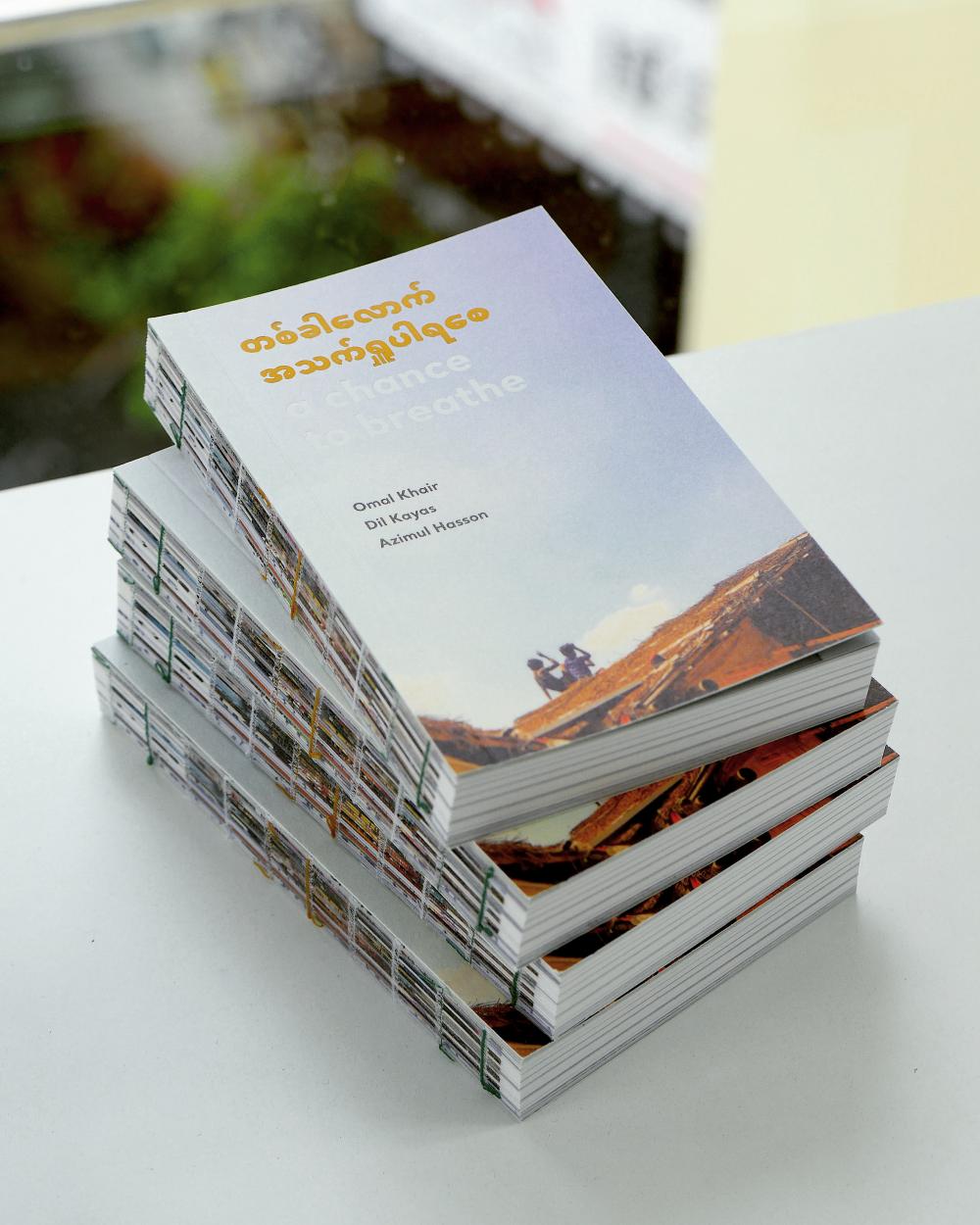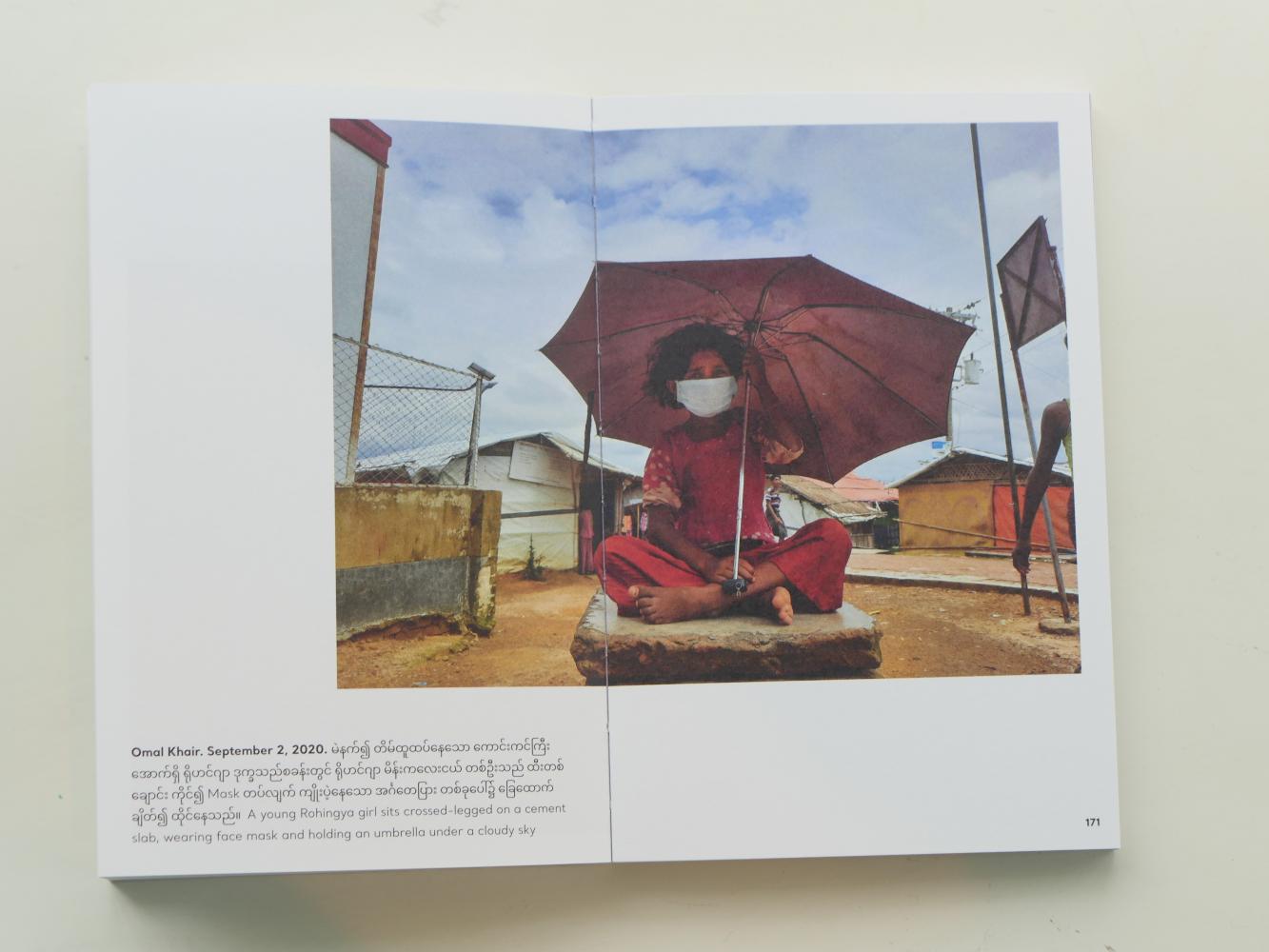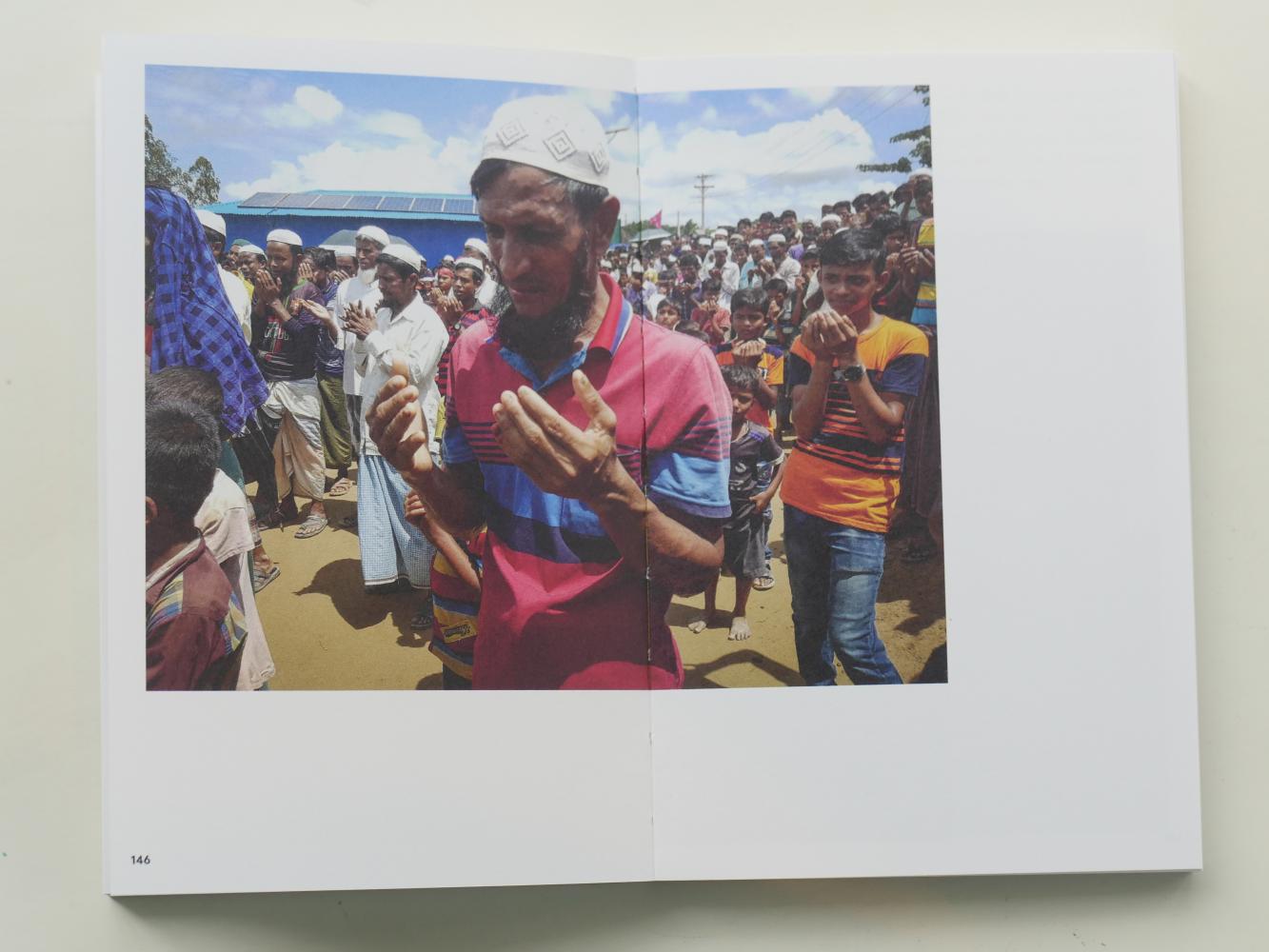Art and human rights violations do not always share the same tone. How can surviving abuse or living with restrictions also be beautiful and artistic? Violations come with misery, hopelessness, suffering and disagreement, while art brings beauty, meaning and creativity. Could brutal human rights violations be presented in artistic form? And what value does that bring to the situation?

A Chance To Breathe.
Recently, The Fort in Bangkok hosted an event by human rights organisation Fortify Rights titled "Art, Hope, And Human Rights In Myanmar". During the event, we heard from ambassadors, the UN Special Rapporteur on Human Rights in Myanmar, human rights defenders and others about the unique interplay between art and human rights.
Tams Lu, a multimedia specialist at Fortify Rights, joined an all-women panel to share her observation that art -- in her case animation -- can provide a layer of security, a translation for complex topics and a megaphone for important causes. For example, an artist can use animation to protect the identities of survivors, explain complex human rights problems and bring a new element of storytelling of the violations.
The crux of the event, however, was the launch of A Chance To Breathe, a new book by three young Rohingya photographers confined to a refugee camp in Bangladesh. The 270-page edition by Omal Khair, Dil Kayas and Azimul Hasson, and published by FotoEvidence, Fortify Rights and Doha Debates, is an illustrative example of the power when art and human rights intertwine.
A Chance To Breathe combines hundreds of photos and poems from the authors, each of whom spent the last several years as Media Fellows with Fortify Rights and Doha Debates. Beginning in 2018, the organisations equipped each artist with mobile phones and training and introduced them to Instagram, where they continue to share their view of daily life in the world's largest refugee camp.

Images from A Chance To Breathe.
These small actions have turned out to be life-changing. Their work has been recognised globally and in 2021, the trio along with Fortify Rights and Doha Debates won a prestigious Shorty Award.
In the book, you'll see happiness, hope, joy, grief, mourning, sorrow and many other feelings captured by the refugee photographers. The book benefits from a beautiful layout and design by FotoEvidence, which helps the reader see the myriad ways refugees live their lives as told by refugees themselves.
A picture is worth a thousand words, as they say. One photo in the book shows a cow being slaughtered for the Eid festival, which aroused feelings in me and others and invited a healthy, broad discussion online. Another set of photos shows a massive fire that burned thousands of refugee shelters, and a barbed-wire fence installed by Bangladeshi authorities that prevented people from escaping the blaze.
Another photo in the book shows new shelters built with canvas, with a message printed from the donor, as aid groups often do, this time in Turkish.
I enjoyed this book. I enjoyed looking at the authors' powerful photos and connecting with their lives, and at times, I forgot they are living in refugee shelters where their fundamental human rights continue to be deprived. They're denied freedom of movement. They can't dream big as most of them can't access education. They can't vote to select the country leaders they prefer.
The three authors are survivors of genocide and live with nearly a million other Rohingya refugees in Cox's Bazar District, Bangladesh, a country that is three times smaller than Thailand but hosts two-and-a-half times the population. They don't have a clear picture of which country would accept them as citizens, though the vast majority of Rohingya refugees want to return to their indigenous homeland in Myanmar. Unfortunately, any returns to Myanmar are delayed by the military junta's ongoing attacks on the civilian population.

Images from A Chance To Breathe. (Photos courtesy of Fortify Rights)
At the book launch in Bangkok, Tom Andrews, the UN Special Rapporteur on human rights in Myanmar, shared his experience visiting Rohingya refugees in Bangladesh and Myanmar. He told those of us in attendance about his trip to an internal displaced persons (IDP) camp in Sittwe township, where 150,000 Rohingya have been living in an extremely horrific situation since 2012: "I remember a man I met told me, if you can't help us or if you won't help us -- I looked around and the condition was unbelievable -- he said, 'Bomb this camp because it would be better to die with my family than to live in this condition'."
Tom explained how Rohingya people live in daily fear in Myanmar, along with all other ethnic nationalities in the country.
A Chance To Breathe is worth your time. It can bring messages to many people, extending hope and light to the three authors and beyond. The authors find and share the meaning of their lives as refugees. Dil Kayas says she can now take photos without fear in the refugee camp in Bangladesh, and she can share them with the world.
"If Rohingya in Rakhine could be free, if they could upload photos and share with people, their situation would be much better," she said. Azimul Hasson says the book makes him "very happy because a book can get people's interest". Omal Khair added: "In the future, I want to travel to many different countries. I hope when you see this book and the photos, you will come to know of Rohingya daily life and our suffering."
A Chance To Breathe is available via FotoEvidence or Amazon. All proceeds from sales go directly to the Rohingya community.

